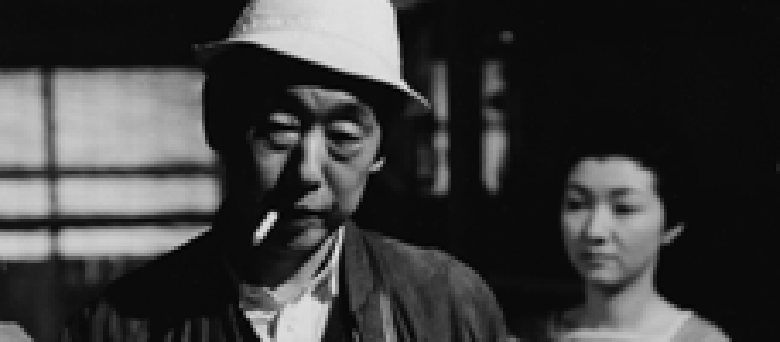Mikio Naruse’s career of 89 films, stretching from the silent period (1930) to the time of Japan’s growing post-War economic affluence (1967), makes him the exact contemporary of the two other great masters of classic Japanese cinema, Yasujiro Ozu (54 films, 1927-1962) and Kenji Mizoguchi (90 films, 1923-56). But Naruse has always seemed to stand somewhat in the shadow of Ozu and Mizoguchi, particularly as, lacking their overt formal qualities, Naruse’s work can be read – mistakenly, in my own view – as a minor variation on the concerns of the two more famous directors. In addition, although Naruse has hardly been unknown (his best pre-War film, Wife, Be Like A Rose! even got a New York release at the time and a Variety review), to a large extent he has been for a long time unseen—so much so that David Thomson in his Biographical Dictionary of Cinema could use Naruse to develop a conceit on the cinephile’s ultimate fantasy of the existence of a body of beautiful films to be kept in reserve, whose viewing is forever delayed, which are perhaps forever unseen.
Fortunately, this lack of access to Naruse films is no longer the case. A number of different countries have seen large Naruse retrospectives in the last year or so; and for those of us who live in places unvisited by these retrospectives, Naruse films have started to be released on DVD, first in France and the U.K., and now in the U.S. It’s these DVD releases that form the basis for our Naruse feature here; and we can only hope that this means the start of greater access to Naruse’s work, because one thing becomes clear the more you see of his films and the more times you watch individual ones: Naruse is one of the greatest of all directors, absolutely the equal of Ozu and Mizoguchi, and consequently one of the three towering figures of Japanese cinema.
But it still seems necessary to place Naruse in relation to Ozu and Mizoguchi and in particular to address the issue of his film style. It’s absolutely true that Naruse’s films do not display style in the way that the other two directors do. Stylistically, Mizoguchi’s films are characterised by a refined and exquisite pictorial beauty, long takes, and lengthy and elegant camera movements. With Ozu, we have the consistent tropes of the excessively low-angle “tatami” shot, the increasing exclusion of camera movement, the crossing-the-line eye-line mismatching that forms the basis of an editing system, and the formalist abstraction of the “pillow” shots of clothes lines, chimneys, and so forth.
Naruse’s style is, in comparison, a more “invisible” one that is in the first place put in the service of the story, of the characters and the emotions in any given scene. It’s a quieter form of filmmaking, which repays an equally quiet attention on the part of the viewer to the way Naruse builds up a scene with a steady progression of shots; and the way each scene segues into the next in a graceful flow. Take, just as one example, one scene from Sound of the Mountain, a conversation between daughter-in-law Kikuko and her parents-in-law. The conversation plays out in a series of medium shots, the speaker placed in the centre of the shot, facing the viewer. Each shot change marks the ebb and flow of the conversation itself. It seems such a simple scene, but it’s here that the genius of Naruse comes through, for under the quiet accumulation of shots that builds up the scene there is a depth of emotional feeling, an intensity of mood that is made all the stronger by the way it is kept in check by Naruse’s unassuming style. Kurosawa, who worked as an assistant to Naruse before he became a director in his own right, has summed this up as well as anyone:
A flow of shots that looks calm and ordinary at first glance, reveals itself to be like a deep river with a quiet surface disguising a fast-raging current underneath.
Donald Richie has talked of Naruse’s audience, that is, the Japanese cinema-going audience as the day, as a “serious” one, in an effort to explain the appeal of a body of work that is, as far as its stories are concerned, fairly relentlessly downbeat. “From the youngest age,” Naruse is so often quoted, “I have thought that the world we in live in betrays us; the thought still remains with me.” It’s tempting to read the pessimistic world-view we get from his films in the contours of Naruse’s own life. Unlike Ozu and Mizoguchi, Naruse (born in 1905) came from a poor background, and his early film career was never as successful as his contemporaries. Although both he and Ozu got work at the Shochiku studio in the silent period (in 1920 and 1923 respectively), it took Naruse much longer before he was assigned his first directing job, and he never achieved Ozu’s success at the studio. He even ran foul of the studio boss Shiro Kido, who famously declared that Shochiku didn’t need “another Ozu”.
After Naruse extricated himself with some difficulty from Shochiku, his career was a very uneven one. It was really only from the early fifties that he produced a consistent body of great work rather than the extremes of some successes amongst indifferent work prior to this. But still he was never granted the authoritative auteur position that Ozu was within the Japanese studio system. Naruse remained a company man, being given projects that were not always ideally suited to him. (In his diaries Ozu noted this himself, how the masterpiece of Floating Clouds – which he greatly admired – was followed by Sudden Rain, to which he was quite indifferent. As a matter of fact, Naruse’s actual follow-up to Floating Clouds was a minor portmanteau assignment Kuchizuke.)
Given the length of his career and the fact that all six films we’re reviewing here are from this final, most successful period of Naruse’s career, it’s worth offering a breakdown of that career:
- 1930-1935: The personally unsatisfactory Shochiku period of Naruse’s career
- 1935-1939: P.C.I./Toho: The first period of personal and artistic success, with the highlights being Wife, Be Like A Flower! and The Whole Family Works
- 1940s: less successful, uneven production during the War and immediate post-War period
- 1950-56: Ginza Cosmetics marked the start of the great period of Naruse’s work, including Repast, Lightning, Older Brother, Younger Sister, Sound of the Mountain, Late Chrysanthemums, and Floating Clouds
- 1956-67: Critics note a falling-off in the quality of the work in this last period, although it includes superb films like When a Woman Ascends the Stairs and Yearning
Naruse’s world is that of the shomingeki, it’s the world of the hardscrabble day-to-day existence of the lower middle class and working class. It’s their determined everyday struggle for the basics of material and financial survival that tempers the pessimistic sense of the defeats of life that is found in Naruse’s work. Naruse’s characters may, like Ozu’s, recognise and acknowledge this sense of defeat, but there is none of the quietist acceptance of the way the world is structured that you get in Ozu. Naruse’s characters are engaged in a constant onward struggle, a struggle that the frequent open endings of his films indicate is one that will continue. His characters may be checked by yet another defeat, but they will fight on.
So many times these characters are women, an ideal choice for Naruse, given the inferior role that has been traditionally assigned to women by Japanese culture and society, and the gritty resolve (especially when played by Naruse’s frequent collaborator Hideko Takamine) with which these women pursue their onward struggle. Yet Naruse never offers a political solution to their dilemma. In a telling scene in Floating Clouds a Communist rally passes in the background and the protagonists take no note of it whatsoever; and indeed Naruse was taken to task by Japanese critics for the apolitical stance he reflected in A Wanderer’s Notebook, the film he based on the autobiography of Fumiko Hayashi (author of Repast, Floating Clouds, and Late Chrysanthemums).
Naruse’s characters have nothing to rely on but their own inner resources, their own flinty determination to persevere. It seems that Naruse never saw life in any terms other than sadness and defeat. A grim childhood; the frustrations of his early career; a brief failed marriage with a film star of the thirties; a large part of his life, it seems, lived out in cheap rented accommodation—and on top of all this you had Naruse’s taciturn, morose, withdrawn personality. One story goes that on train trips none of his actors or crew ever wanted to sit next to him and the seat would usually remain empty!
Still, in the end, we shouldn’t overplay the pessimism of Naruse’s world-view, for the films themselves are anything but. Yes, the world they portray is a hard one—“if they move a little,” he said of his characters, “they quickly hit the wall.” But the films are at the same time energised by the force with which these characters struggle with the world, and they are underpinned by a steady onward flow that is simultaneously quiet and subtle and rigorous and forceful. This is inspiring filmmaking of the highest order, which only asks you to listen quietly, carefully to what it has to say—work of great beauty, to be placed with the very best of Japanese cinema.
Introduction by Ian Johnston
Films

Wife! Be Like a Rose!
28 November
Wife! Be Like A Rose! is a great film from the equally great period of Japanese cinema of the thirties. It is also quite remarkable stylistically: in comparison to the subdued, almost invisible style of Naruse’s famous films of the fifties and sixties, it’s decidedly flamboyant in its camera movement (pans and tracks in all directions) and its editing patterns.
Review by Ian Johnston | Comment

Repast
30 November
Repast is a film about the quotidian, and appropriately enough, it begins and ends with routine. Appropriate to Naruse’s usual milieu, this is largely the routine of women and their work — here, mainly housework — and the morning routine we see in the opening and close of the film is that of women diligently tending to their families.
Review by Leo Goldsmith | Comment

Mother
28 November
The school essay source of Mother’s screenplay does explain the unevenness of tone, the at times over-explicitness, and a certain sentimentality that you don’t get in other Naruse films of the time. It also lacks those films’ steady flow and balanced calibration of scene to scene. Mother does have its virtues, but it’s by no means the masterpiece you’ll find some critics refer to it as.
Review by Ian Johnston | Comment

Older Brother, Younger Sister
28 November
Older Brother, Younger Sister is also further confirmation of how great a director Naruse is. Here’s a little-known work that turns out to be simply superb, an almost perfect illustration of Kurosawa’s famous formulation of the director’s style as “a flow of shots that looks calm and ordinary at first glance, [but] reveals itself to be like a deep river with a quiet surface disguising a fast-raging current underneath.”
Review by Ian Johnston | Comment

The Sound of the Mountain
28 November
The complexity of Shingo and Kikuko’s relationship is one of the film’s richest elements, indicating a reservoir of unresolved and knotted emotion that at once hints at gentle paternalism, incest, deep sympathy, and a blind, inappropriate May-December longing.
Review by Leo Goldsmith | Comment

Floating Clouds
28 November
Yumiko and Tomioka’s needs and desires, the quality of their feelings for one another never coincide. Even the fantasy of a lovers’ double suicide, while shared, is conjured up by each of them at different times. Instead, the film charts the inevitable ebb and flow of their lives, as they separate and come together yet again.
Review by Ian Johnston | Comment

Flowing
28 November
When, in Flowing’s last few seconds, the film returns to the river that it opened with, the ironic poignancy and implicit tragedy of this final sequence in the House of Tsuta ends up being subsumed in the onward flow of life.
Review by Ian Johnston | Comment

Summer Clouds
28 November
Yae is a great Naruse heroine and she’s certainly the character that guides the audience through the film—Summer Clouds opens and closes with her. But the film doesn’t stay solely with her. The story, full of narrative ellipses, is structured around a complex and initially confusing array of relatives from the same family.
Review by Ian Johnston | Comment

When a Woman Ascends the Stairs
28 November
Once again, she has ascended the stairs and is back at the cocktail bar, and her smile is fixed and unwavering. As at the beginning of the film, she will take each day as it comes and will wear this same impenetrable smile, her most essential professional accessory.
Review by Leo Goldsmith | Comment

Yearning
28 November
Here now is her realisation of the mistakes she has made, the wrong life she has led, and her inability to break out of the patterns of that old life, premised on her self-denial, to create her own happiness. No words are offered here, for Reiko’s silence is the only form appropriate to Yearning’s devastating ending.
Reviews
-

Wife! Be Like a Rose!
1935 -
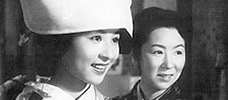
Mother
1952 -
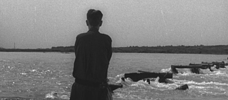
Older Brother, Younger Sister
1953 -

The Sound of the Mountain
1954 -

Floating Clouds
1955 -
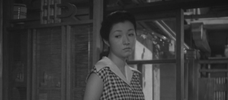
Flowing
1956 -

Summer Clouds
1958 -
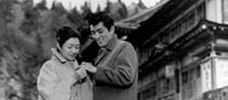
Yearning
1964 -
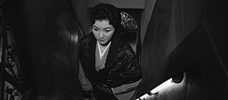
When a Woman Ascends the Stairs
1960 -

Repast
1951
We don’t do comments anymore, but you may contact us here or find us on Twitter or Facebook.



